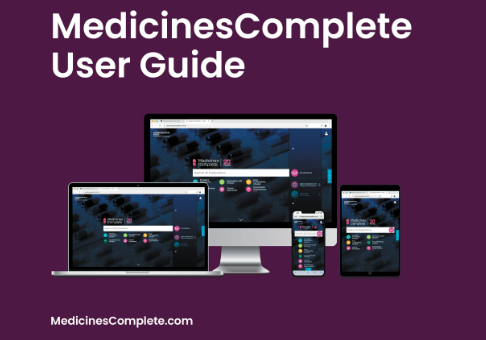Agilio: Diagnosis and Treatment Guidance June 2024 Update
This update contains 10 significant changes and 44 minor changes.
Significant Changes:
- Bowel screening — reviewed. A literature search was conducted in March 2024 to identify evidence-based guidelines, UK policy, systematic reviews, and key RCTs published since the last revision of this topic. No major changes to clinical recommendations have been made.
- Chronic kidney disease — reviewed. A literature search was conducted in April 2024 to identify evidence-based guidelines, UK policy, systematic reviews, and key randomized controlled trials (RCTs) published since the last revision of this topic.
- Hearing loss in adults — reviewed. A literature search was conducted in March 2024 to identify evidence-based guidelines, UK policy, systematic reviews, and key randomized controlled trials published since the last revision of this topic. The recommendations have been updated in line with current evidence in the literature. The topic structure has been amended to improve clarity and navigation.
- Influenza – seasonal — reviewed. A literature search was conducted in April 2024 to identify evidence-based guidelines, UK policy, systematic reviews, and key randomized controlled trials published since the last revision of the topic. No major changes to recommendations have been made.
- Meibomian cyst (chalazion) — reviewed. A literature search was conducted in March 2024 to identify evidence-based guidelines, UK policy, systematic reviews, and key randomized controlled trials published since the last revision of the topic. No major changes to the recommendations have been made.
- MI – secondary prevention — reviewed. A literature search was conducted in March 2024 to identify evidence-based guidelines, UK policy, systematic reviews, and key randomized controlled trials published since the last revision of this topic. No major changes to the recommendations have been made. The contraindications, cautions, adverse effects, and drug interactions of angiotensin-converting enzyme inhibitors and beta-blockers have been removed, and links have been added to relevant sections in the Agilio DTG topic on Hypertension.
- Peripheral arterial disease — reviewed. A literature search was conducted in March 2024 to identify evidence-based guidelines, UK policy, systematic reviews, and key randomized controlled trials (RCTs) published since the last revision of this topic. There have been some minor structural changes to this topic, the term ‘critical limb ischaemia’ has been replaced with ‘chronic limb-threatening ischaemia’ in line with current literature terminology, but there have been no changes to the recommendations.
- Pilonidal sinus disease — reviewed. A literature search was conducted in February 2024 to identify evidence-based guidelines, UK policy, systematic reviews, and key randomized controlled trials published since the last revision of this topic. No major changes to clinical recommendations have been made, but the topic has been restructured.
- Sleep disorders – shift work and jet lag — reviewed. A literature search was conducted in March – April 2024 to identify evidence-based guidelines, UK policy, systematic reviews, and key randomized controlled trials published since the last revision of this topic. No significant changes to recommendations have been made. New sections have been added on risk factors and diagnosis.
- Urinary tract infection – children — reviewed. A literature search was conducted in March 2024 to identify evidence-based guidelines, UK policy, systematic reviews, and key randomized controlled trials published since the last revision of the topic. The topic has undergone minor restructuring to improve clarity and navigation.
Minor Changes:
- Abdominal aortic aneurysm screening — minor update. Changed information regarding NHS England who are now responsible for the screening programme.
- Balanitis — minor update. Information added stating that concomitant treatment with clarithromycin and ivabradine is now contra-indicated and caution is now advised when co-administering clarithromycin with edoxaban, as per the manufacturer’s updated SPC.
- Benzodiazepine and z drug withdrawal — minor update. The suggested zopiclone withdrawal schedule has been updated.
- Boils, carbuncles, and staphylococcal carriage — minor update. Information added stating that concomitant treatment with clarithromycin and ivabradine is now contra-indicated and caution is now advised when co-administering clarithromycin with edoxaban, as per the manufacturer’s updated SPC.
- Bronchiectasis — minor update. Information added stating that concomitant treatment with clarithromycin and ivabradine is now contra-indicated and caution is now advised when co-administering clarithromycin with edoxaban, as per the manufacturer’s updated SPC.
- Cellulitis — minor update. A typographical error has been corrected. Information added stating that concomitant treatment with clarithromycin and ivabradine is now contra-indicated and caution is now advised when co-administering clarithromycin with edoxaban, as per the manufacturer’s updated SPC.
- Cerebral palsy — minor update. Other drugs known to lower blood pressure added to the interactions section for baclofen in the prescribing section, in line with the manufacturers updated SPC for baclofen.
- Chest infections – adult — minor update. Information added stating that concomitant treatment with clarithromycin and ivabradine is now contra-indicated and caution is now advised when co-administering clarithromycin with edoxaban, as per the manufacturer’s updated SPC.
- Chronic obstructive pulmonary disease — minor update. Information added stating that concomitant treatment with clarithromycin and ivabradine is now contra-indicated and caution is now advised when co-administering clarithromycin with edoxaban, as per the manufacturer’s updated SPC.
- Cough – acute with chest signs in children — minor update. Information added stating that concomitant treatment with clarithromycin and ivabradine is now contra-indicated and caution is now advised when co-administering clarithromycin with edoxaban, as per the manufacturer’s updated SPC.
- Dental abscess — minor update. Information added stating that concomitant treatment with clarithromycin and ivabradine is now contra-indicated and caution is now advised when co-administering clarithromycin with edoxaban, as per the manufacturer’s updated SPC.
- Diabetes – type 2 — minor update. Recommendations on screening for, and management of, diabetic kidney disease have been removed from this topic and links added to the Prodigy topic on Chronic kidney disease.
- Dyspepsia – pregnancy associated — minor update. Revised content in the summary regarding the use of antacids and alginates following communication from UKTIS.
- Dyspepsia – proven functional — minor update. Doses of PPIs to use for H. pylori eradication have been clarified. Information added stating that concomitant treatment with clarithromycin and ivabradine is now contra-indicated and caution is now advised when co-administering clarithromycin with edoxaban, as per the manufacturer’s updated SPC.
- Dyspepsia – proven peptic ulcer — minor update. A table on PPI doses to use for eradication of H. pylori has been ended to this topic. Information added stating that concomitant treatment with clarithromycin and ivabradine is now contra-indicated and caution is now advised when co-administering clarithromycin with edoxaban, as per the manufacturer’s updated SPC.
- Dyspepsia – unidentified cause — minor update. Doses of PPIs to use for H. pylori eradication have been clarified. Information added stating that concomitant treatment with clarithromycin and ivabradine is now contra-indicated and caution is now advised when co-administering clarithromycin with edoxaban, as per the manufacturer’s updated SPC.
- Eczema – atopic — minor update. Information added stating that concomitant treatment with clarithromycin and ivabradine is now contra-indicated and caution is now advised when co-administering clarithromycin with edoxaban, as per the manufacturer’s updated SPC.
- Erectile dysfunction — minor update. Typographical error corrected.
- gastroenteritis — minor update. Information added stating that concomitant treatment with clarithromycin and ivabradine is now contra-indicated and caution is now advised when co-administering clarithromycin with edoxaban, as per the manufacturer’s updated SPC.
- Heart failure – chronic — minor update. Revised wording on advice regarding fluid restriction to ensure that is focused on those people with severe symptomatic heart failure.
- Herpes simplex – genital — minor update. A typographical error has been corrected.
- Herpes simplex – oral — minor update. The dosage regimen for aciclovir has been aligned to the manufacturer’s summary of product characteristics.
- HIV infection and AIDS — minor update. A minor typographical error was corrected.
- Immunizations – seasonal influenza — minor update. The management section has been updated to align with the NHS immunisation programme 2024 to 2025.
- Impetigo — minor update. Information added stating that concomitant treatment with clarithromycin and ivabradine is now contra-indicated and caution is now advised when co-administering clarithromycin with edoxaban, as per the manufacturer’s updated SPC.
- Leg ulcer — minor update. Information added stating that concomitant treatment with clarithromycin and ivabradine is now contra-indicated and caution is now advised when co-administering clarithromycin with edoxaban, as per the manufacturer’s updated SPC.
- Mastitis and breast abscess — minor update. Information added stating that concomitant treatment with clarithromycin and ivabradine is now contra-indicated and caution is now advised when co-administering clarithromycin with edoxaban, as per the manufacturer’s updated SPC.
- Multiple sclerosis — minor update. Other drugs known to lower blood pressure added to the interactions section for Baclofen in prescribing information, in line with the manufacturer’s updated SPC.
- Nappy rash — minor update. Information added stating that concomitant treatment with clarithromycin and ivabradine is now contra-indicated and caution is now advised when co-administering clarithromycin with edoxaban, as per the manufacturer’s updated SPC.
- Olecranon bursitis — minor update. Information added stating that concomitant treatment with clarithromycin and ivabradine is now contra-indicated and caution is now advised when co-administering clarithromycin with edoxaban, as per the manufacturer’s updated SPC.
- Otitis externa — minor update. A typographical error has been corrected.
- Otitis media – acute — minor update. Information added stating that concomitant treatment with clarithromycin and ivabradine is now contraindicated and caution is now advised when co-administering clarithromycin with edoxaban, as per the manufacturer’s updated SPC. Additional information added to the basis for recommendation in the section on management about use of anaesthetic and analgesic drops.
- Paronychia – acute — minor update. Information added stating that concomitant treatment with clarithromycin and ivabradine is now contra-indicated and caution is now advised when co-administering clarithromycin with edoxaban, as per the manufacturer’s updated SPC.
- Pre-patellar bursitis — minor update. Information added stating that concomitant treatment with clarithromycin and ivabradine is now contra-indicated, as per the manufacturer’s updated SPC.
- Scarlet fever — minor update. Information added stating that concomitant treatment with clarithromycin and ivabradine is now contra-indicated and caution is now advised when co-administering clarithromycin with edoxaban, as per the manufacturer’s updated SPC.
- Sinusitis — minor update. Information added stating that concomitant treatment with clarithromycin and ivabradine is now contraindicated and caution is now advised when co-administering clarithromycin with edoxaban, as per the manufacturer’s updated SPC.
- Smoking cessation — minor update. Removed the information regarding the lack of provision of e-cigarettes from smoking cessation clinics.
- Sore throat – acute — minor update. Information added stating that concomitant treatment with clarithromycin and ivabradine is now contra-indicated and caution is now advised when co-administering clarithromycin with edoxaban, as per the manufacturer’s updated SPC.
- Temporomandibular disorders (TMDs) — minor update. This topic has been updated in line with the NHS England Getting It Right First Time (GIRFT) and Royal College of Surgeons’ Faculty of Dental Surgery guideline Management of painful temporomandibular disorder in adults.
- Urinary tract infection (lower) – men — minor update. Severe cutaneous adverse reactions (SCAR) added as an adverse effect of pivmecillinam, as per the manufacturer’s updated SPC.
- Warts – anogenital — minor update. The sections on assessment, and management have been updated in line with the British Association for Sexual Health and HIV (BASHH) national guideline for the management of anogenital warts in adults (2024).
- Whitlow (staphylococcal and herpetic) — minor update. Information added stating that concomitant treatment with clarithromycin and ivabradine is now contra-indicated and caution is now advised when co-administering clarithromycin with edoxaban, as per the manufacturer’s updated SPC.
- Whooping cough — minor update. Added information regarding the tests available and the sources of each test for pertussis. Information added stating that concomitant treatment with clarithromycin and ivabradine is now contra-indicated and caution is now advised when co-administering clarithromycin with edoxaban, in line with the manufacturer’s updated SPC. Additional detail has been added about the interaction between clarithromycin and tacrolimus.





